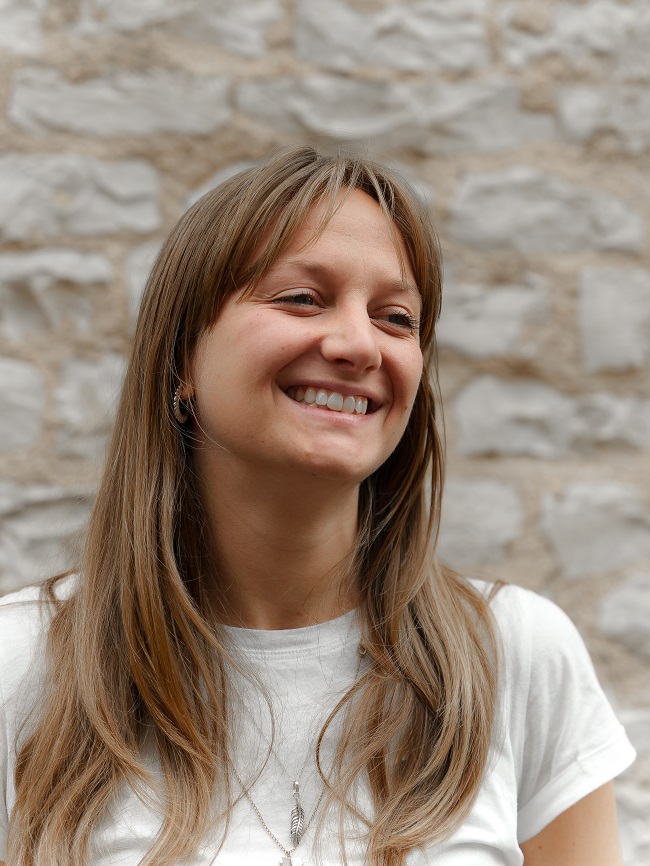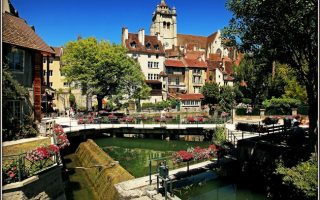French Monument of the Month: the Abbey of Beaulieu-en-Rouergue
Sponsored
In this new monthly series, we take a look around France’s many beautiful historical buildings under the care of the Centre des Monuments Nationaux. This month, the abbey of Beaulieu-en-Rouergue, in Tarn-et-Garonne.

South wing of the abbey overlooking the gardens © Eric Sander / Centre des Monuments Nationaux
Nestled in the valley of the Seye river, in Tarn-et-Garonne, the Cistercian abbey of Beaulieu-en-Rouergue was founded in the 12th century. A first document attests of the presence of monks in 1151, attracted to the quietness of the valley and the freshwater river trickling nearby. The location, and the abbey, were quickly known as Belloc, the contraction of the two occitan words bèl (beau – pretty) and loc (lieu – location).
A communion of old and new
The religious community lived under the rules of Saint-Benoît, first established in the 6th century. The Cistercians pledged vows of poverty and humility and renounced all property. This translated in the simple of sober architecture of their abbeys and monasteries which, incidentally, are all built along the same model: a cloister, placed in the centre leads to all the main rooms. In the north sits the church, the chapter house and dormitory are in the east and in the south are all the functional buildings (kitchens, refectory, heating room). The west wing is reserved for the lay brothers, the monks in charge of manual labour on the property.

The church of the abbey © Eric Sander / Centre des Monuments Nationaux
Battered by the wars of religion of the 16th century which destroy the gothic cloister, the abbey was vacated for a few years after 1592 and until the 17th century when the abbey was renovated and transformed a little.
It was then crudely converted into a farm in the mid-19th century after it was sold by the state to the village of Saint-Anotin Noble Val during the Revolution. The village had started to dismantle the church before abandoning the project due to costs.
In ruins, it was saved in 1959 by benefactors Geneviève Bonnefoi et Pierre Brache. The two collectors restored and transformed the abbey into a contemporary art centre and host to their prestigious art collection over the next 10 years.
Today, the abbey appears remarkably well preserved and is a fine example of medieval Cistercian gothic architecture while serving as an impressive contemporary art centre. Visitors can regularly peruse art exhibitions held in the church and stroll in a delightful garden planted with 1,000 roses!

The library on the first floor, decorated with works of art from the Bonnefoi-Brache collection © Eric Sander / Centre des Monuments Nationaux
Upcoming exhibition
The latest exhibition to inhabit the ancient walls of the abbey of Beaulieu-en-Rouergue will be celebrating Belgian ceramicist Johan Creten who was given carte blanche by the monument. ‘Le Coeur qui Déborde’ will be held from June 10th to October 1st, presenting over 40 works, including 35 unseen pieces made of ceramic, bronze and resin.
A pioneer in the revival of ceramics in contemporary art, Johan Creten is renowned for his allegorical ceramic and bronze sculptures which are infused with ideas of beauty, lyricism and mystery as well as the artist’s humanist approach.
This exhibition comes just a year after the abbey was reopened, having undergone renovations, including a new museum experience to better present the Bonnefoi-Brache modern art collection.

Le Coeur qui Déborde exhibition © Centre des Monuments Nationaux
Lead photo credit : The abbey of Beaulieu-en-Rouergue after restoration was completed in July 2022 © Eric Sander / Centre des Monuments Nationaux
Share to: Facebook Twitter LinkedIn Email
More in abbey, churches, French history, monument of the month, monuments
Leave a reply
Your email address will not be published. Required fields are marked *






REPLY